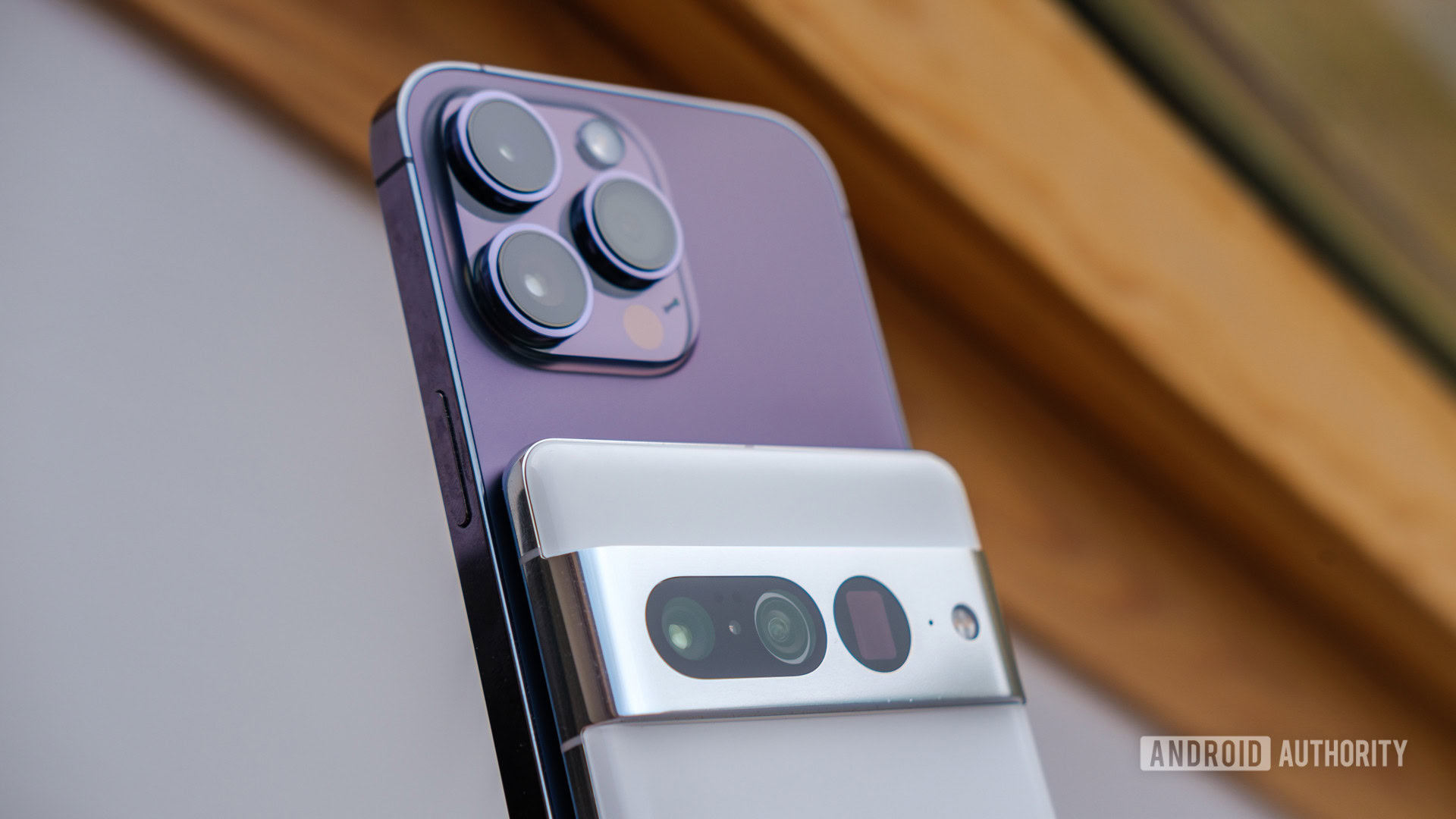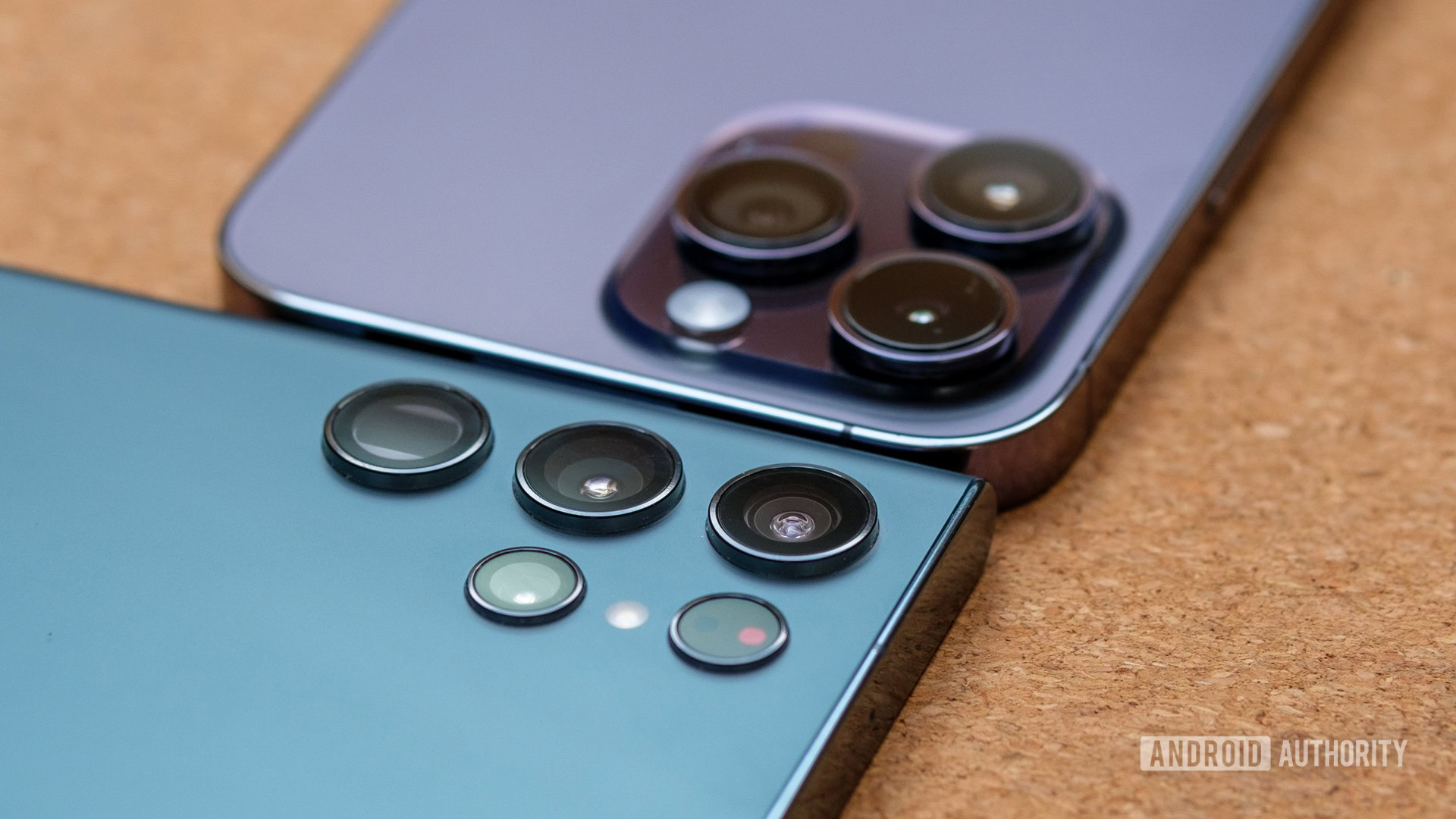Affiliate links on Android Authority may earn us a commission. Learn more.
I'm sick of wide field of view cameras, but I'll have to live with it

I’ll admit that I’m a bit of a serial complainer when it comes to smartphone cameras. I have an issue with iffy portrait faces and whine about minor detail issues, but at least some of the wonderful Android Authority readership share my preference for telephoto over ultrawide cameras. To be honest, I’m a little tired of all my photos offering such a wide field of view.
Don’t get me wrong, I’m all for an ultrawide snap and wouldn’t want a phone without the ability to fit a full landscape or building into the frame. But I want that as the optional extra, not the default shot type. This itch has only become more irritating after spending a lot more time porting around my awesome mirrorless camera with an admittedly inexpensive 35mm prime lens (50mm full-frame equivalent) on it. You just can’t beat the look of a more “standard” focal length for 90% of shots.
My primary smartphone at the moment, the mighty Galaxy S22 Ultra, offers a 23mm wide main camera and a 13mm ultrawide, along with a 70mm telephoto and colossal 230mm periscope zoom. 23mm is already so broad that I very rarely need to boot up the ultrawide; I’ve probably used it just a handful of times in the last six or so months.
The Galaxy S22 Ultra's wide and ultrawide camera setup verges on redundant, but it's not alone in this.
It doesn’t help that the quality of the ultrawide lens isn’t quite up to scratch with the main camera, as is fairly typical. I’d rather stick with the primary shooter wherever possible. Unfortunately, even with the main camera, the all-encompassing field of view often means I have to move closer to my subject, resulting in a warped perspective. Not to mention that it lacks the depth of field of a longer focal length.
Still, the ultrawide is nice when you really need that step back, but I’d still argue that a camera this wide results in distorted perspectives, even for landscape snaps. Furthermore, the main camera is more than you need to fill most scenes. The examples below showcase exactly the sort of issues and redundancy I’ve experienced with essentially dual wide-angle cameras.
While Samsung’s setup feels particularly redundant, at least to me, it fits with the general trend across virtually all flagship smartphones. Apple’s iPhone 14 Pro provides 24mm and 13mm options, and while the Google Pixel 7 Pro offers a bigger step between lenses, 25mm and 12mm both fit plenty in your snaps. Now don’t misunderstand me, the main cameras take great pictures in terms of image quality, but the field of view isn’t what I want for everyday photography; I need a tighter crop for portraits, pets, and bragging about my most recent brisket smoke.
Turning back to mirrorless talk for a minute, a 13mm ultrawide lens is considered a pretty specialist bit of kit. It’s something you might use occasionally but is never going to be a go-to lens. Even 24mm is considered pretty wide for an SLR. Your typical street photography zoom lens offers a variable focal length between 18mm and 55mm. So your median shot might use a focal length of around 30mm, with adjustments for wide or telephoto zoom should you need it.
Phone cameras fall at the wider end of what the SLR space would consider useful on the day-to-day.
By comparison, your typical smartphone offers lenses around 13mm, 24mm, and 75mm or so for telephoto, leaving a big gap reliant on digital zoom in the range SLRs seem to prioritize. A smartphone’s main camera focal lengths definitely fall at the wider end of what the high-end photography space would consider useful on the day-to-day. And that’s certainly what I’ve been battling against with even the best camera phones I’ve used this year.
If you’re interested in a point of comparison, here are a few snaps I’ve taken with my mirrorless and a 35mm lens this year. It’s a wonderfully versatile focal length with a very natural perspective that, honestly, makes me hate resorting to my phone when I’ve left my camera at home.
It’s a form factor issue, at least for now

No doubt you’re now wondering, “why?” Why would smartphone brands deliberately compromise their flagship multi-camera setups in this way?
Thankfully, this isn’t deliberate, as far as I see it. Rather it’s another one of those mobile form-factor trade-offs that have come to define the current multi-camera trend.
Focal length is determined by the size of the image sensor and the distance between the lens and the sensor. In other words, a larger sensor requires a bigger camera bump to achieve the same focal length. The push for larger sensors, while great from a light capture perspective, trades off for wider fields of view if you still want a thin body and/or modest camera bump.
This is also tied to the development of periscope cameras for longer-range zoom. Those very long focal lengths beyond 70mm require more space, necessitating a move to internal camera housings. We’ve covered the ins and outs of this problem in more detail here.
Bigger sensors have improved image quality but also driven the trend in wider fields of view.
We’ll never fit a 1-inch sensor horizontally inside a phone, or even today’s quite common 1/1.3-inch sensors. They’re just too large, so periscope main cameras are out of the question unless we accept smaller main sensors as the trade-off. That might be viable if small sensor technology continues to improve, but that would take many more years. Alternatively, new lens technologies may come along that enable focusing with smaller bumps, but that’s also yet to be seen. In the near term, the only viable trade-off would be yet larger camera bumps to extend to focal length out to 30mm or so.
That said, there are promising trends in the space that may yet resolve my complaint, namely advances in movable lens aspects, such as HUAWEI’s 10-stop variable aperture, Sony’s adjustable focal length zoom, and Tecno’s retractable camera lens. Advancements in small motorized components that fit discretely within the smartphone form factor are moving along at pace. In time, they may be able to mimic the flexibility of high-quality zoom lenses found in mirrorless cameras.
Short of that, software tricks could offer short-cut alternatives to hardware. While they can’t replicate the correct depth of field, techniques seen in the Pixel 7 Pro (such as crops from a pixel-binned sensor and sensor image fusion) provide solid image quality above and beyond what we’ve come to associate with traditional digital zoom. I’d love to see these ideas expanding to leverage triple or quad-camera setups. Paired with improvements in software bokeh, phones are closing in on mimicking zoom lens flexibility without the hardware. But there’s still some way left to perfect the technique, let alone before it’s ubiquitous across phone brands.
Variable focal lengths and software tricks might help, but I'm waiting on the perfect solution.
Maybe, just maybe, someone will be able to build my ideal smartphone camera setup in the not-too-distant future. A powerful main camera with a focal length of around 35mm, even if it requires a motorized zoom that has to extend from the housing, would be ideal for everyday snaps. Combined with a modest 20mm or so ultrawide, free from lens distortion, and a variable focal length periscope zoom between 60mm and 150mm, all bundled with AI image-enhancing smarts, might even tempt me to ditch my mirrorless for a phone entirely.
Until then, I’ll keep grumbling about my smartphone snaps not looking quite right and begrudgingly carry around my “real” camera, when I remember it.